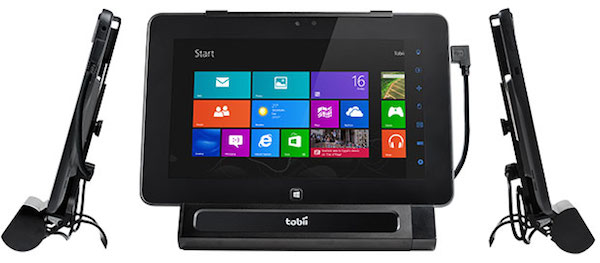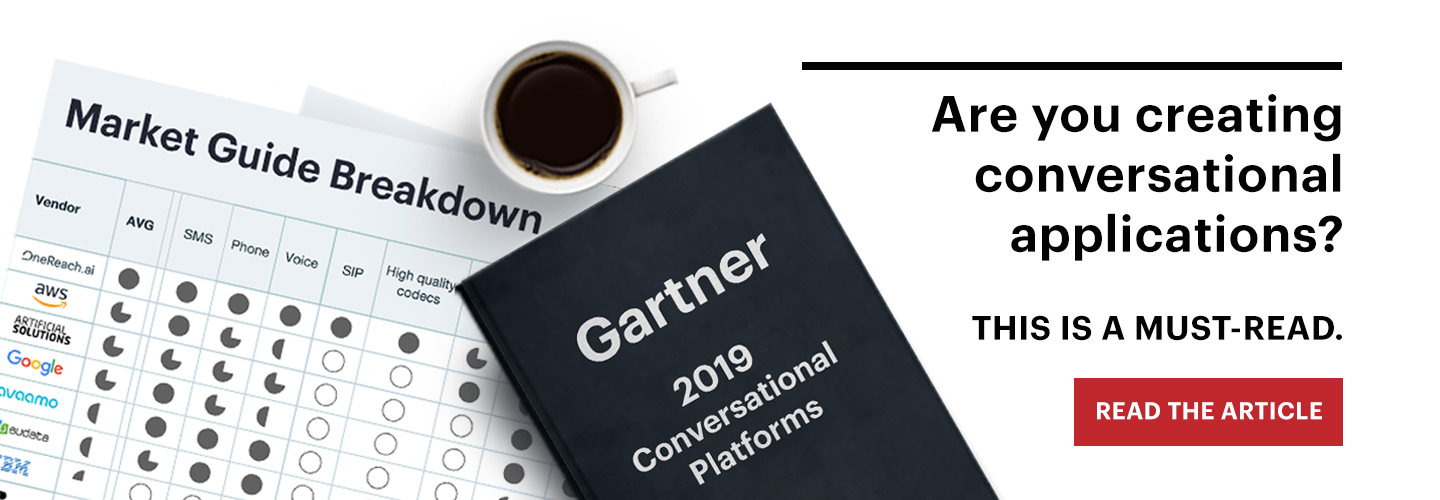Considering that a central goal of UX is making experiences easier and more rewarding for everyone who engages them, it seems like accessibility would be at the forefront of experience design at every level.
Sadly, this isn’t always the case. There are plenty of websites, apps, and other digital products that miss out on opportunities to reward individuals with disabilities by making the most of available technologies.
Tobii EyeMobile, the winner of the Design for Experience award in Accessibility, serves as proof that seizing the opportunity to create experiences that are accessible to people with physical and sensory impairments and those with needs for special modes of interaction can lead to groundbreaking innovation that changes lives.
A system consisting of the Tobii PCEye Go eye tracker, a tablet running Windows 8, and a bracket that can mount the system to a wheelchair or stand up for tabletop use, EyeMobile employs the touch gestures available in the Windows 8 interface to let users control a computer using only their gaze.
Tobii EyeMobile made a notable appearance in a Windows ad during Super Bowl XLVIII, which featured former New Orleans Saints safety Steve Gleason, who suffers from Lou Gehrig’s disease (ALS), using the system. “Although I am hopeful for a medical cure for ALS,” Gleason says near the end of the spot, “I have always said until there is one, technology is my cure.”
EyeMobile makes a very visible and inspiring case for technology as a cure, and that made an impression on the judges in the Accessibility category.
“This is a huge challenge and I am so happy to see that a company is developing solutions that may work for this audience,” says judge Debra Levin Gelman. ”I have a close relative with cerebral palsy and this could be game changing for her.”
The judges also noted the skepticism that often greets eye-tracking technology from many UX researchers in particular, citing EyeMobile as an eye-tracking system with undisputable value.
“There is no better way to indicate a position on a computer or tablet screen, than using your eyes—what you are looking at is probably where you want to click,” says Malin Mårtensson, a UX designer at Tobii Technology AB. “We’re convinced that eye tracking and gaze interaction will be part of every computer in the near future, just like a track pad or web camera already is today.”
Mårtensson notes that for individuals suffering from a spinal cord injury, a stroke, cerebral palsy, or ALS, eye tracking might be the only way to operate a computer, get an education, get back to work, express themselves creatively, pass time, play with their children, learn more about their disabilities, and live fuller, more independent lives. She says that eye tracking and gaze interaction technology is at the core of Tobii’s business, and the company has been using the technology for assistive and augmented communication since day one.
“We continuously invest to improve our eye tracking performance and reduce the size of the eye trackers, and as we do we also look for and find new ways of using our technology,” Mårtensson says. “This led to the birth of the Tobii PCEye Go, a peripheral eye tracker than can be used on any desktop and laptop computer running Windows.”
“At the same time the sales of consumer tablets basically sky-rocketed from out of nowhere, everybody used them … or did they?” Mårtensson asks. “There was one group of people who were locked out from using the latest consumer technology—those with limited physical and motor abilities We saw a need and we realized that we already knew the solution: The Tobii EyeMobile, a truly portable, lower cost, eye-tracking solution.”
Seizing the opportunity to create accessible experiences can lead to groundbreaking innovation
WebAIM Makes Accessibility More Accessible
While groundbreaking products like Tobii EyeMobile can give accessibility high profile exposure, there are many organizations working within the design community to help other organizations make their content accessible to people with disabilities.
A finalist in the Accessibility category, WebAIM fulfills this mission by providing training, technical assistance, web site evaluation and reporting, and other web accessibility-related services and information. Founded in 1999, WebAIM is a non-profit based at the Center for Persons with Disabilities, making them uniquely positioned to provide research-based, real-world experience and knowledge to practitioners.
“The types of challenges we see vary greatly, but the most common for organizations starting their accessibility journey is usually lack of understanding and buy-in,” says Associate Director Jared Smith. “This is why we focus so much on training and education. Once our clients gain an understanding of accessibility and why it is so important, it becomes much easier to make it happen.”
The judges were impressed by the accessibility of the WebAIM site and especially enjoyed the web-based WAVE web accessibility evaluation tool, which provides a graphical analysis of a site’s stengths and weaknesses from an accessibility standpoint.
“WAVE is easy to use and really useful,” says judge Josh Tyson, Managing Editor of UX Magazine. “I ran uxmag.com through it and quickly pinpointed some things we can improve for accessibility.”
According to Smith, WAVE was conceived around 2001 as a basic tool to provide a more user-friendly presentation of web accessibility issues and features.
“Most tools provide a very technical, text-based report that is difficult to use and provides little learning opportunity,” Smith says. “Anyone can use WAVE to visually identify issues in context. As technology and accessibility guidelines have changed, WAVE has continually been updated. It started as a stand-alone program and, over the years, has been adapted to a web-based tool, then to the browser extensions that are available today.”
An Eye on Accessibility
There were other notable applications in the contest from organizations, companies, and individuals focused on raising awareness of accessibility and promoting it within the experience design community and beyond:
The Paciello Group is a consultancy that provides expertise in accessibility, with the goal of bringing attention and energy to achieving and sustaining accessibility on the web. Led by front-end developer, P.J. Gardner, Gardner Information Design, Inc. (GIDI) helps businesses, organizations, and individuals develop and enhance their web presence through universal and accessible design. Knowbility, Inc. is a non-profit with a board of community leaders dedicated to supporting those with disabilities by promoting accessible design. Named after the late Cynthia Wadell, an expert and pioneer of technology solutions for those with disabilities, the Cynthia Says Portal educates users in the concepts of accessible web design and content. Media Access Australia‘s AccessIQ initiative provides comprehensive resource materials to help individuals and organizations ensure their websites, apps, and digital experiences are accessible.
Providing people going through health crises with free, protected websites that allow them to share their stories with a select audience, CaringBridge put accessibility at the core of a recent redesign. Ed Summers is a blind software engineer and accessibility specialist who leads a team at analytics software company, SAS. He’s made it his personal mission to enable people with disabilities to realize their full potential in the classroom and in the “21st century knowledge economy.” Providers of an open source portal for enterprise clients, Entando has been a proponent of accessibility since 2005, often relying on field tests to make sure accessibility measures are being met. The question: “How do users with one arm type?” led designer Andrew Zusman on a quest to discover how the experience of typing could be made more accessible, culminating in a video presentation and a UX Booth article.
Built for Accessibly
Tobii EyeMobile was joined in the competition by some other intriguing products aimed at accessibility issues:
Wiser, an app that replaces a smartphone’s interface with one that’s easier for children and the elderly to understand, also allows a “companion” to provide support from their own device. Clevermind, is a voice-activated app designed to keep people with Alzheimer’s mentally active. Web accessibility software and services company Deque Systems offers a suite of tools including Amaze, which corrects accessibility issues through the use of “overlays.”
Visit the international Design for Experience awards site to check out all of the winners and check back with UX Magazine next week as we exlore the results in another category.










